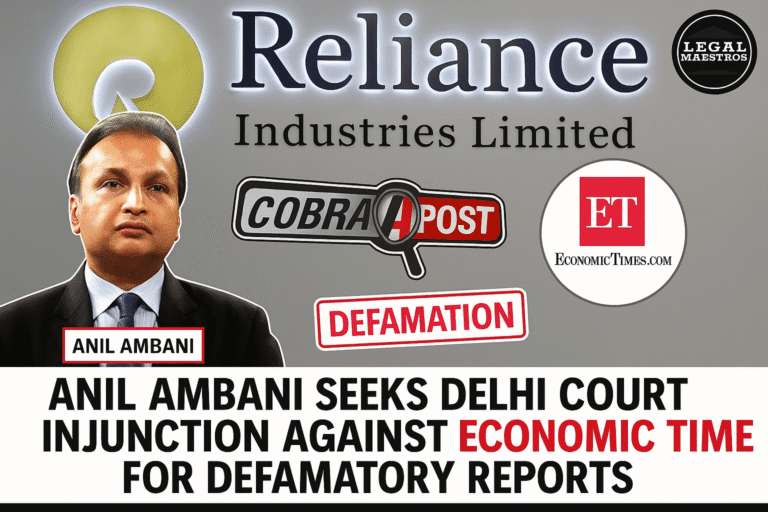
Sigachi Pharma Explosion Claims 34 Lives, Absolute Liability Doctrine to Be Tested
Sigachi Pharma Explosion: A Test for Absolute Liability
For instance, a deeply troubling recent explosion at a Sigachi Industries pharmaceutical factory in Telangana tragically resulted in the deaths of 12 workers and severely injured another 34.
Though this terrible incident—seemingly caused by a reactor explosion resulting from an alleged exothermic reaction—sparks a myriad of international issues, it highlights the necessity of India’s legal doctrine of Absolute Liability. While the nation continues to mourn the life senselessly lost in this horrific incident, the legal community and families that are forever affected will undoubtedly look to this doctrine to seek justice and compensation.
The Catastrophic Incident
One night very late on June 30, 2025, our chief engineer received a code red alert from his deputy that a spontaneous combustion detonation had razed the Sigachi Industries plant in Pashamylaram, Hyderabad.
For any queries or to publish an article or post or advertisement on our platform, do call at +91 6377460764 or email us at contact@legalmaestros.com.
At 9:20 AM this morning, the explosion illuminated the sky surrounding Eastman’s plant, causing doors from the plant to be blown out in a concussive blast that melted aluminum, causing devastation as far as 5 miles away.
For More Updates & Regular Notes Join Our Whats App Group (https://chat.whatsapp.com/DkucckgAEJbCtXwXr2yIt0) and Telegram Group ( https://t.me/legalmaestroeducators )
Construction workers on site—including many who were still in the dark about the disaster that had just occurred—were suddenly thrown into the flaming hot rubble, and countless lives were lost in a heartbreaking flash. That turns out to be a miraculously good thing when you learn just how terrible that explosion was—so terrible that many of those workers were reported to have been thrown hundreds of yards from that explosion’s epicenter. Rescue crews Emergency services arrived on the scene within minutes, with as many as four fire tenders first responding to bring the inferno under control, and soon rescue crewmembers reported needing to begin cutting through the throngs of people trapped under the razed buildings. The latest production pause the company’s been touting—on an hour-and-a-half-long virtual plant tour—is a 90-day production stop at that unit, caused by what’s been described as a core manufacturing infrastructure with “catastrophic damage.”
For any queries or to publish an article or post or advertisement on our platform, do call at +91 6377460764 or email us at contact@legalmaestros.com.
The Doctrine of Absolute Liability
This tragedy inexorably brings to the foreground a different doctrine, the doctrine of Absolute Liability—a powerful legal doctrine created by the Indian Supreme Court, originally, to address and respond to industrial disasters. Unlike the common law “strict liability” background rule—which would give some defenses to businesses (natural disasters or the victim’s carelessness, for instance)—absolute liability makes firms that engage in hazardous endeavors completely liable for the dangers they inflict, no matter how prudent they might have been.The rule entails that when such an activity harms others, the enterprise bears strict liability to pay for the harm done to victims, no matter whether or not the enterprise took every reasonable effort or acted with negligence.
The doctrine’s foundation-breaking roots are jocularly found in the heralding national case—M.C. Mehta v. Union of India—which flourished in the aftermath of the 1986 Oleum gas leakalThe Court realized that strict liability couldn’t work perfectly in the real world, where many activities could lead to disasters, so it decided that any business involved in a dangerous activity must take full responsibility to protect the public from harm caused by that activity.ning against serious safety violations.
Implications for Sigachi Pharma
The Sigachi Pharma explosion underscores the criticality of determining the extent to which absolute liability applies. As a business that is focused largely on the contract FY 0e,t of pharmaceuticals, their business places the company directly in contact with healthy, rated chemicals and manufacturers processes.
For any queries or to publish an article or post or advertisement on our platform, do call at +91 6377460764 or email us at contact@legalmaestros.com.
Attributable to what, though? If indeed the explosion was the result of a chemical reaction in a reactor—an argument made by the plaintiffs in the recent Wyoming train derailment war—then the accident is squarely within the definition of an “inherently dangerous activity” that causes “catastrophic damage.” As a result, Sigachi Industries must be strictly liable for the resulting 19 losses of life and resulting injuries sustained, notwithstanding their claims that they complied with all safety protocols or that the incident was a freak accident.
The legislative framework will no doubt change the discussion toward ensuring that these victims, and all others like them, receive justice and expeditious compensation for their grievous injuries and untimely deaths.
This tragic incident should be an immediate wake-up call, a Jeremiah-type prophet condemnation of the overwhelming burden placed on industries that handle dangerous chemicals and their process safety management efforts they are required to have in place.
For any queries or to publish an article or post or advertisement on our platform, do call at +91 6377460764 or email us at contact@legalmaestros.com.
Additionally, the reason for the principle of absolute liability is that any profits made from risky activities must cover all damages caused, respecting people’s right to life. The factors influencing these findings will need to await judgment until further research is conducted. The legal standards are not terribly complicated. An enterprise that willingly makes that reckless choice ought not be able to hide behind the very same enterprise they chose to participate in.






